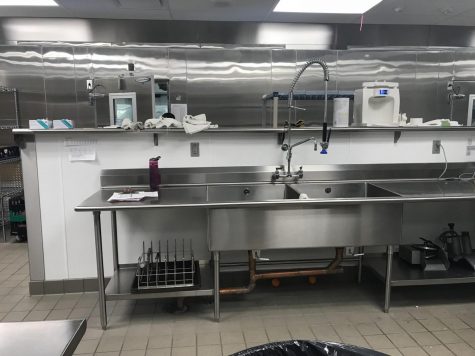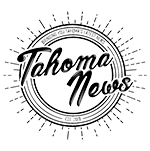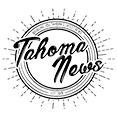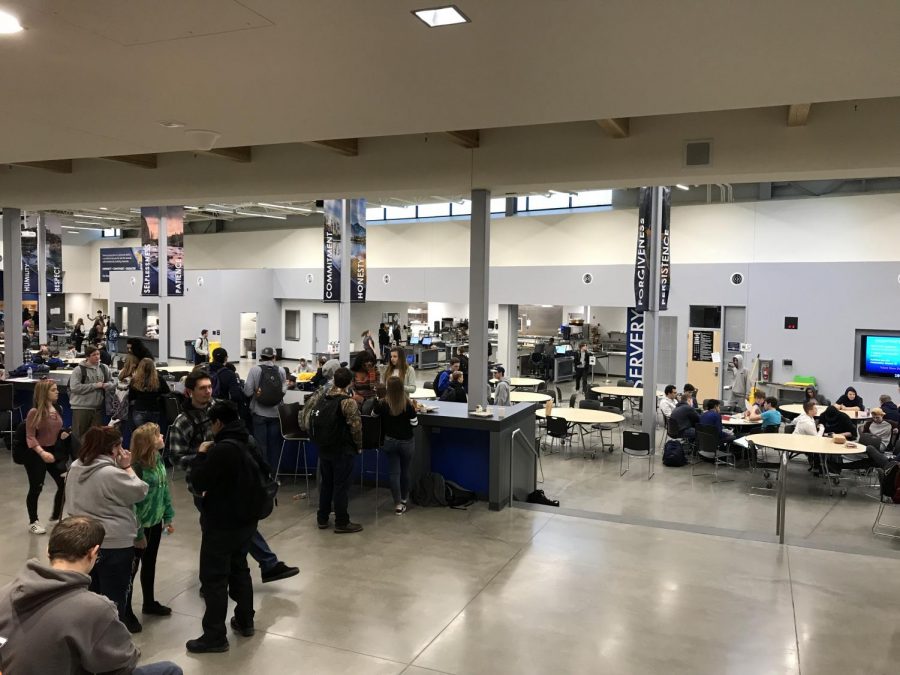Where it comes from
where is the food at Tahoma High School coming from?
Tahoma students enjoy lunch while hanging out with friends
January 26, 2018
90% of students nationwide purchase school lunches. Either because it’s easier to buy it at school rather than packing a lunch or it is financially better. But has anyone ever thought about where the food that is being served comes from or the process it goes thru to be cooked? That thought has probably crossed many people’s minds at least once and it will finally be answered.
Everyday students come to school and the first thing they smell when walking in the door in the morning, is the smell of the school food that is being prepared behind the closed doors of the kitchen. Most already know that behind those doors most food is being taken out of the freezer to be heated up and ready to serve. In ¨The real problem with lunch¨ an article written by The New York Times explains how lunches that are served in different countries are often times better tasting and healthier than those served in the United States. Lunches in Spain, France, Italy, and many other countries were photographed and documented in a video by Michael Moore called ¨Where to invade next¨ and when this documentary came out parents and students were shocked to see that school lunches in those countries were far more fresh and healthier for the students and even less expensive. Soon after this documentar, many parents started to ask school districts if they could change their lunch programs to far more healthier choices for their children, rather than having them eat greasy frozen food.
But it didn’t work out. According to a source called ¨Unhealthy school lunches not making the grade¨ by Amanda Ray, the reason why school lunches are not going to change anytime soon is because it’s actually more expensive. Schools receive $2.68 for each free meal served through the National School Lunch Program, a federal meal program. Which is not enough money to fix the school lunches or make them better quality. It would cost the government tons of money to hire actual chefs and a complete full running kitchen for every school across the nation. So,
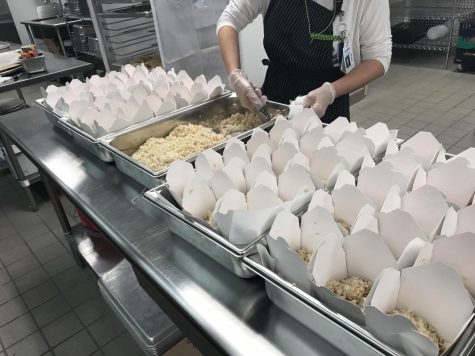
it’s easier to stick to the heavily processed foods because they are less expensive. In another source ¨26-Ingredient School Lunch Burger: What’s Inside It, And The Battle Against Processed Foods.¨ by the Huffington post, the article talks about how most of the meats served in school lunches are heavily processed and aren’t even meat anymore but ¨pink slime¨ which is heavily processed meat. The source stated that ¨The U.S. Department of Agriculture responded, electing to scale back on a planned purchase of 7 million pounds of ground beef mixed with the processed beef filler. Schools now have the option to purchase either 95 percent lean beef patties made with the mixed product or fattier bulk ground beef without the controversial mix¨. This still isn’t the healthiest plan though because it’s still processed food.
But what does this mean for the mystery meats and cartons of milk that
Tahoma serves daily?. Many students around school say that they hate school lunch, either because it´s gross or unhealthy. Tahoma Freshmen Maya Cheam stated ¨I honestly think it can’t be that good because many students, me included, bring their own lunches or leave campus to get food rather than stay and eat cafeteria food.¨. Some others said ¨When I look at it, it doesn’t look very appealing to the eye¨ said Sophomore Kelsey Gross and ¨It’s terrible¨ said Kevin Park also a Sophomore at Tahoma. Most Juniors and Seniors just replied by saying that they didn’t eat school lunch but brought lunch from home or left campus to eat.
But where does this food come from? And is it really bad food? According to Karen Olson the kitchen staff manager ¨We get most of our food thru FSA (Food Services of America), and Duck Delivery for most of our produce¨. I did a little research on these companies. I spent time going through the FSA website and they seem to be a trustworthy company. They serve other places not just schools, but restaurants too. Their company is a privately-held and family owned company and provides the best service where they supply. Also, I did some digging Duck Delivery and their website states ¨In addition to our strict HACCP program, all of our facilities have the honor of being distinguished as a SQF Level 3 facilities, the highest certification available. Constant microbial inspection and stringent employee training programs ensure that our products are fresh, clean, and safe. Our in-house and independent product and environmental tests are in full compliance with FDA, ODA, and the EPA.¨ Clearly, these companies are on the up and up for food safety.
This concludes that many schools out there should be checking their school lunch programs. The reason for this is because there are many schools out there that do not have trustworthy companies delivering their food. I found this based on the research I did on many schools around the nation. Tahoma on the other hand is doing a good job with their school lunch. Many might think that it’s not very healthy or that it might come from non trustworthy companies. But what I have found out is that there is nothing to worry about when it comes to food at Tahoma. All these articles that talked about school lunches being bad for a students health might be true but not at Tahoma High School.
With what I have found out, students should know that they shouldn’t always trust articles on the internet because most of the time their schools could be that small percentage that actually has good companies delivering the school lunches. It’s good for students to check where school lunches are coming from, from time to time to know what kind of food they are putting in their bodies. Next time you see or experience a bad food problem it’s probably just the kitchen staff having a bad day but don’t blame the companies that deliver the food because where our food come from at Tahoma are from trustworthy companies that deliver only the best.
